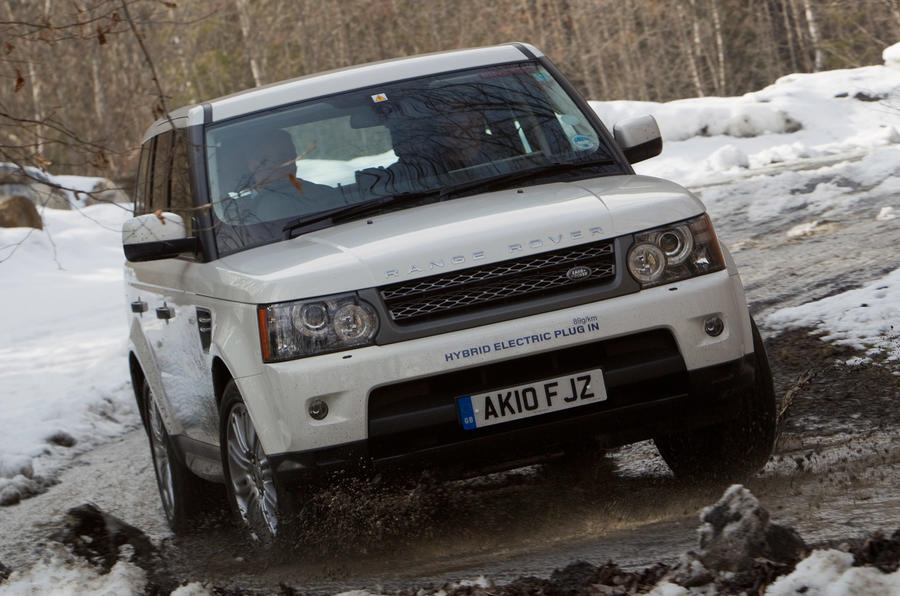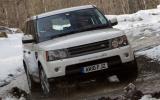What is it?
A prototype plug-in hybrid Range Rover Sport – which on the official cycle emits just 89g/km Co2. Although work in progress for Land Rover - this car is one of only five engineering examples in existence, with a production version yet to be confirmed – what makes this drive relevant is that the technology underpinning this prototype is closely related to a conventional hybrid version of the all-new Range Rover, due in 2013.
In essence, an electric motor replaces the torque converter in a ZF-supplied eight-speed automatic gearbox. One clutch then combines the drive from this with that of a conventional motor – in this case a 3.0-litre TDV6 – before a second clutch engages this with the transmission.
This arrangement allows the hybrid transmission to be paired with a variety of petrol and diesel motors and the resulting drive is transferred to the road – or other surface – through Land Rover’s standard all-wheel drive hardware.
Compared with the conventional hybrid, the plug-in variety tested here uses a larger motor and battery. In this case, it’s a 69kW electric motor capable of supplying 148lb ft of torque – to supplement the diesel’s 443lb ft – and a 14.2kWh lithium ion battery. Also, as the name suggests, the Range_e’s battery can be topped up from the mains supply.
Using a regular 240V, 13-amp domestic supply, a full charge takes a little over four hours. Land Rover claims this gives the Range_e the capability of travelling over 20 miles on electric power alone.
What’s it like?
In practice, though, such figures are of limited relevance, because although the Range_e is capable enough on electric power at low to medium speeds – and in theory it can hit 70mph without troubling its diesel motor (which it does for the official test figures) – you end up using a mix of power sources.
As an example, when I collect the fully charged Range_e it hums into life almost inaudibly and pulls away electrically and with a smoothness entirely befitting a Range Rover. Through town if remains electrically powered, without any real concession to usable performance. If you want to play traffic light grand prix, the electric motor will call for back-up, but drive normally and the car stays electric for longer than any conventional hybrid I’ve tried. Only when accelerating on to a faster road through an uphill slip road did the diesel motor fire.
Range_e project leader Garry Putt explains that it takes well under a second to start the engine, synchronise speeds and smoothly deliver torque to the wheels, which feels about right. Is the integration noticeable? On this prototype there is a rattle from the starter motor, which Putt says is a known problem and easy enough to overcome for production. But the actual mating of the two power sources happens impressively smoothly.
To an extent, the relative performance of the two motors has been meshed together, too. Dan Beeston, hybrid systems engineer, describes how the system works. “When you call for more performance,” he says, “we ramp up the electric supply to provide instant acceleration while the diesel engine starts. Then the two are coupled together for maximum power.”
In practice, you still notice the extra propulsion when the diesel kicks in – but, crucially, you don’t feel like you’re not moving before it does. Moreover, with sufficient battery charge, the Range_e can maintain a decent cruising speed on electric power alone – even uphill. To prove the Range-e is still a Land Rover we embark on a little light off-roading. Anything more extreme is off limits today because this prototype has yet to be tested for underbody impact protection – and that’s an issue with an expensive battery strapped to the floor.















Join the debate
Add your comment
Re: Land Rover Range_e
Precise and concisely put.
Re: Land Rover Range_e
So a Golf Bluemotion weighing 1262kg and with a 1.6 litre diesel engine emits 99 g/km CO2, 10 more than this Range Rover officially emits. A child can understand that such hybrid emissions figures are nonsense, so what is going on? You can't blame manufacturers for playing the game that legislation sets, so either there is collusion between legislators and manufacturers to accept a path of low resistance (weight loss is expensive) or someone somewhere is deeply misguided. Can Autocar at least add a bit of insight to the coverage? You'll be telling me next that a Porsche hypercar can run at over 100mpg. Oh wait...
Re: Land Rover Range_e
official co2 figures need to start adding in the co2 per Kwh of electricity rather than including it as 'free'. And we need to get used to seeing economy figures as 'miles per kwh' for electric vehicles too. Then we'd see how efficient EVs or hybrids really are - and the London C-charge can remain meaningful. That said, I applaud LR for applying EV technology in a way that stays true to their core values.